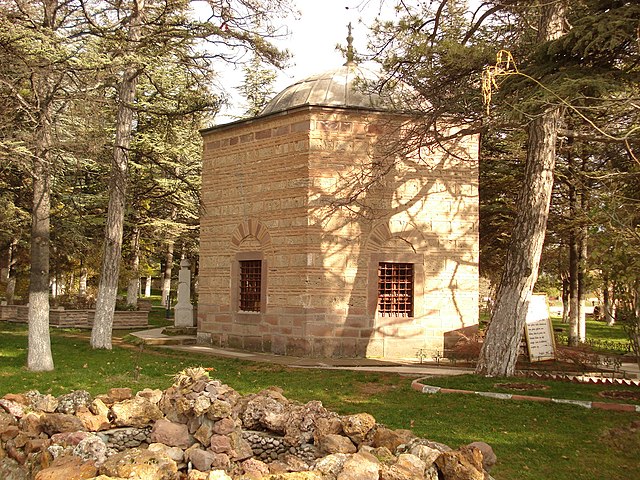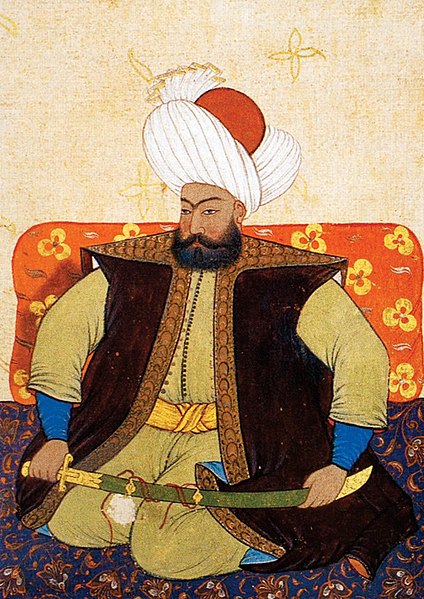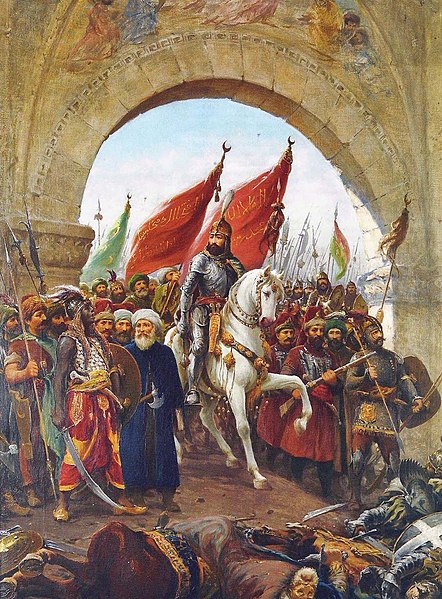Osman I or Osman Ghazi was the founder of the Ottoman Empire. While initially a small Turkoman principality during Osman's lifetime, his beylik transformed into a world empire in the centuries after his death. It existed until shortly after the end of World War I.
An Ottoman miniature depicting Osman I, c. 1580
Ertuğrul's türbe (tomb) in Söğüt
16th-century depiction of Osman I by Paolo Veronese
Ilkhan Mahmud Ghazan (on horseback), higher ruler of Anatolia during the early years of Osman's reign. All Turkoman Beys, or Emirs, were subordinate to him despite the inherent hostility between Turks and Mongols.
The Ottoman Empire, historically and colloquially known as the Turkish Empire, was an imperial realm that spanned much of Southeast Europe, West Asia, and North Africa from the 14th to early 20th centuries; it also controlled parts of southeastern Central Europe between the early 16th and early 18th centuries.
Ottoman miniature of Osman I by Yahya Bustanzâde (18th Century)
The Battle of Nicopolis in 1396, as depicted in an Ottoman miniature from 1523
Sultan Mehmed the Conqueror's entry into Constantinople; painting by Fausto Zonaro (1854–1929)
Ottoman miniature of the Battle of Mohács in 1526








